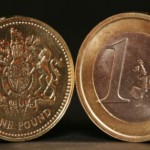Australian dollar distanced from lows unseen in 3.5 years against its US rival on Monday, following the large-scaled sell-off in emerging market shares and currencies on Friday.
AUD/USD touched a daily high at 0.8737 at 7:10 GMT, after which consolidation followed at 0.8716, still gaining 0.37% for the day. Support was likely to be received at January 24th low, 0.8660, also the pairs lowest point since July 19th 2010, while resistance was to be encountered at July 24th high, 0.8775.
On Friday a number of emerging market currencies came under selling pressure. The Argentine peso tumbled 1.5% against the US dollar, after recording its largest decline in 12 years on Thursday, because nation’s central bank reduced attempts to support national currency with dollar sales. The Turkish lira depreciated 1.9% versus the greenback, while the Russian ruble registered a 1.3% decrease. South African rand dropped 0.9% and India’s rupee fell 1.2%.
The MSCI Emerging Markets Index of stocks declined 1.3% today, adding to the 2.3% drop recorded last week, which has been the largest slide since the period ended November 8th.
“There’s a feeling that the decline in the Aussie over the last couple of days might have been a bit overdone,” said Mitul Kotecha, the global head of foreign-exchange strategy at Credit Agricole Corporate & Investment Bank SA in Hong Kong, cited by Bloomberg News. “I don’t think we’ll see a substantial decline in the Aussie from these levels.”
However, the Aussie may remain vulnerable ahead of the outcome of Federal Reserve Banks meeting on policy, scheduled to be held on January 28th-29th.
The Federal Open Market Committee (FOMC) will probably reduce the monthly pace of bond purchases from the current 75 billion USD by increments of 10 billion USD at every policy meeting to exit the program this year, according to the median estimates by experts in a survey by Bloomberg conducted on January 10th.
In addition, new home sales in the United States probably decreased 1.9% to the annualized level of 0.455 million units in December, according to the median forecasts of economists, after sales reached 0.464 million units in the preceding month. The official report is due to be released at 15:00 GMT today. New home sales are a crucial indicator for current housing market conditions in the country, as better than expected figures will certainly provide support to greenbacks demand.
The yield on US benchmark 10-year Treasury bonds climbed one basis point, or 0.01 percentage point, to reach 2.73%.
Meanwhile, the Aussie was slightly higher against the euro, with EUR/AUD cross down 0.11% on a daily basis to trade at 1.5711 at 9:04 GMT. AUD/NZD pair was gaining 0.33% to trade at 1.0586 at 9:06 GMT.





